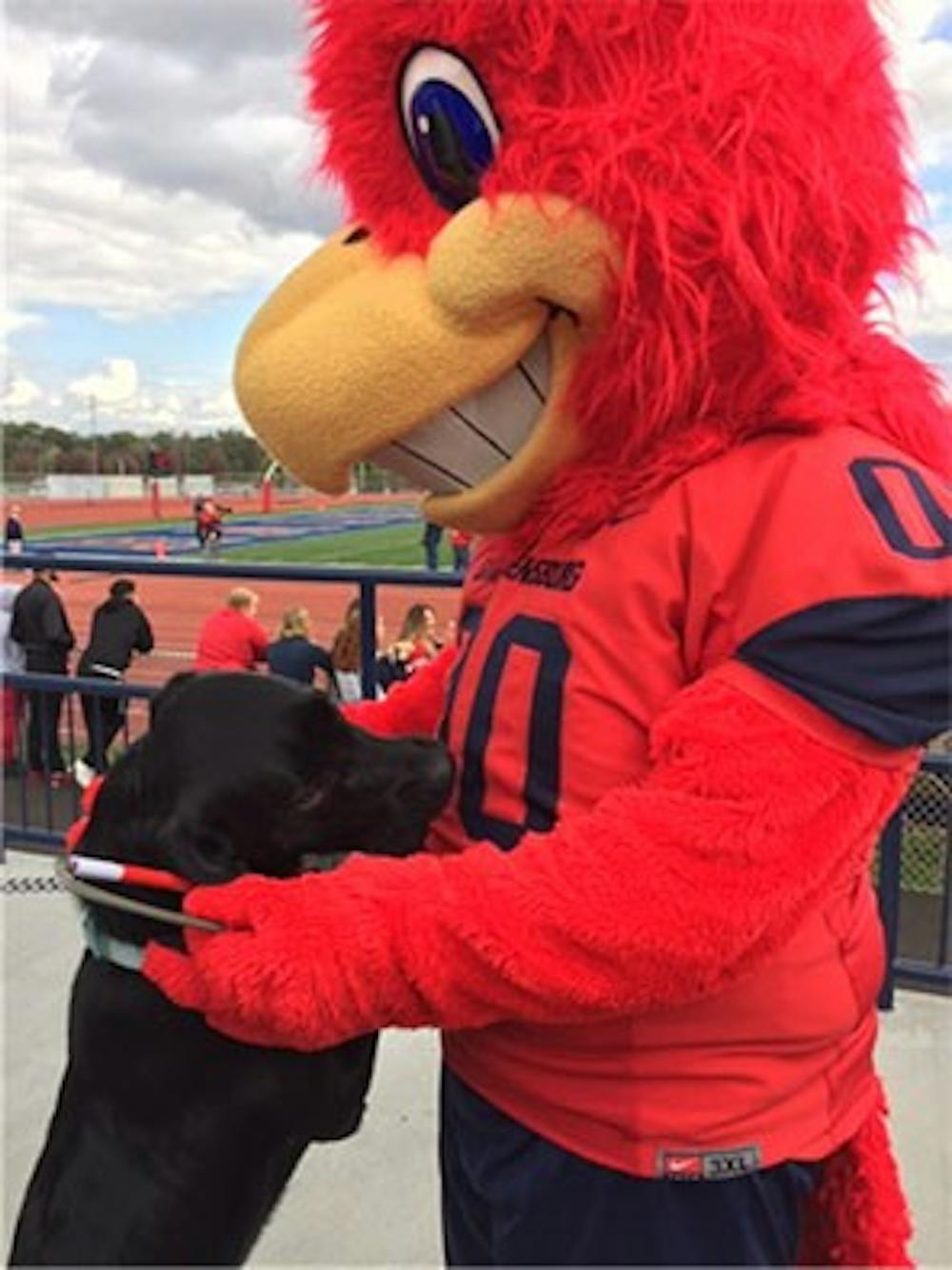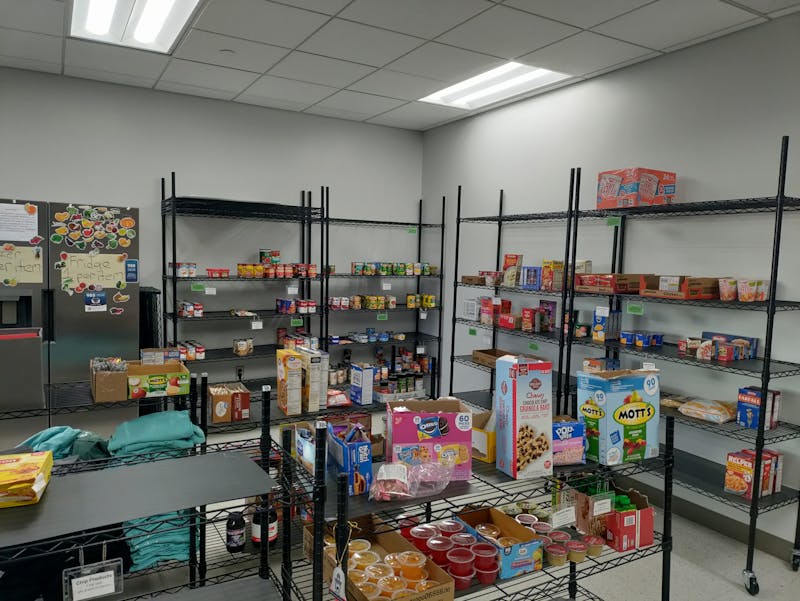It is said that dogs are man’s best friend. This is true for many self-identified dog people, but for some, dogs are more than pets or best friends. And no, I do not mean those who see their dogs as family members, but rather, those who find an outlet to live a more independent life through their companionships with the tail-wagging animals.
In the United States, approximately 500,000 service dogs provide assistance and support to people with varying needs, according to ShareAmerica. As these dogs faithfully become the eyes for the blind, ears for the deaf and the helping hands (technically, helping paws) for those with physical disabilities or disorders such as autism and epilepsy, they often have a life-altering effect on their owners who may be unable to fulfill their daily needs on their own.
Andrea Malmont, a professor in the teacher education department, was a special education teacher before coming to Shippensburg University. Pairing her knowledge of how dogs can help those with disabilities with her love for dogs, Malmont became a puppy raiser with The Seeing Eye in 2009. She is now raising her 11th puppy with the organization — a yellow Labrador retriever named Faith.
The Seeing Eye is one of 12 guide dog schools in the U.S., which breeds and raises German shepherds, Labrador retrievers, golden retrievers and Labrador-golden puppies to become Seeing Eye dogs. The New Jersey-based organization also provides extensive harness training for the dogs, and instruction for the blind to ensure that they both possess the necessary skills and knowledge to achieve the benefits of a successful guide dog and owner relationship.
“They’re the oldest and the largest in the United States, so it was kind of an easy draw,” Malmont said of The Seeing Eye.
While both puppy raisers and Seeing Eye dog trainers play a critical role in the development of the dogs, they are not to be confused. Puppy raisers are responsible for teaching basic manners and commands from when they welcome home the puppy at seven weeks old, to approximately 16 months old, when it is time for the young dog to return to The Seeing Eye.
Seeing Eye dog trainers receive the dogs after the initial puppy raising process and lead them through four weeks of harness training on busy city streets, so they are comfortable navigating busy and potentially hazardous conditions.
The Seeing Eye has very few restrictions on who can or cannot become a puppy raiser for the organization, as it cherishes all volunteers, but it does require those interested to fill out an application where they detail their histories with dogs and their interests in the organization.
After filling out the application, Malmont said it typically does not take more than a few months to hear back from the Seeing Eye on its decision, but wait times vary based on the number of applicants and the number of returning puppy raises, as they receive priority.
“[Once you become a puppy raiser], the requirements are that you are supposed to go to the monthly meetings and expose your dogs as much as possible, not only for the socialization but to make them work and learn the commands that they will use for life,” Malmont said.
While puppies inherently demand a significant amount of time, care and attention from whoever is raising them, Seeing Eye puppies can present a new set of challenges.
Because Seeing Eye puppies need to be heavily socialized and well-behaved in public, the raisers need to be persistent and patient. These skills are further put to the test when they begin to teach their puppy basic commands, as temperament can vary from breed to breed, and the raisers must be flexible with their training strategies.
“People always ask me: ‘Is there a difference with the breeds?’” Malmont said. “I think Shepherds are very serious, and easy to train — you can practically do it with your eyes closed — but they are very vocal dogs. I think golden retrievers are just clowns for a while, but I love the challenge of the clown, and labs are in-between the two. Labs tend to be knuckleheads and live by their stomachs.”
Allison Watts, an associate professor in the management, marketing and entrepreneurship department at SU, who became a puppy raiser for The Seeing Eye last February, looked down at her golden retriever/black lab mix, Herman, and chuckled in agreement, saying he has chewed through three leashes so far this semester.
Watts was inspired to get involved with The Seeing Eye by Malmont, whom she saw walking around campus with the puppy she was raising shortly after being hired at SU in 2009. At the time, Watts said she had her own dog with which she was content, but thought Malmont’s experiences with the organization were interesting, and kept puppy raising in the back of her mind as something she may want to do someday.
“After the dog I had died, I thought to myself, ‘maybe I’ll talk to her and see if I want to do that,’” Watts said. “That was in January of this year, and I got Herman in March.”
Welcoming Herman into her home has been a mutually beneficial experience, as Herman has exposed Watts to the joy of the Seeing Eye and encouraged her to practice patience, love and charity, while she taught him the same.
“There are two things you need to do: love them and make sure they come back with confidence,” Watts said, reflecting on her experience so far.
But love comes with a price, and for Malmont and Watts, that price is in the form of a goodbye when the time comes to return their puppies to The Seeing Eye.
However, after the formal goodbye, puppy raisers get to see their puppy, which they raised into a diligent guide dog, one final time at the “town walk.” The town walk is the Seeing Eye dog’s graduation from training, and it highlights their growth over the last year and a half, which is a rewarding experience for the puppy raisers.
“You have to stay back behind and not touch your dog or yell for your dog, but you get to watch them work as a guide dog with their trainer,” Malmont said. “So you get to walk around town as they are intersecting cars that are purposely trying to cut them off. You get to watch them navigate through busy areas in a city.”
Letting go is never easy, but knowing that they raised dogs to do good for others, much like parents who raise their children to do good in the world, makes the experience, though short, worth it enough for Malmont and Watts to want to do it again, and again.
“I value my independence and my freedom. I can get up and go places when I feel like going,” Watts said. “To someone who is visually impaired or physically handicapped, that’s not always an easy thing for them to do. So to the extent that this dog will help somebody do that, that’s why you do it.”




The Slate welcomes thoughtful discussion on all of our stories, but please keep comments civil and on-topic. Read our full guidelines here.